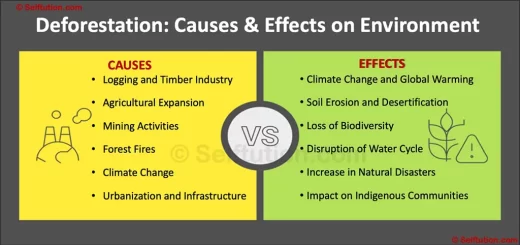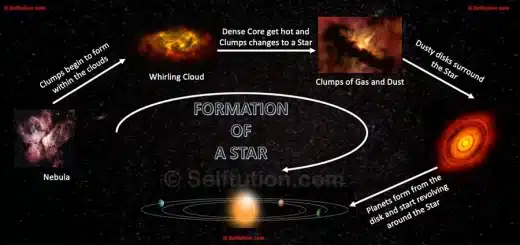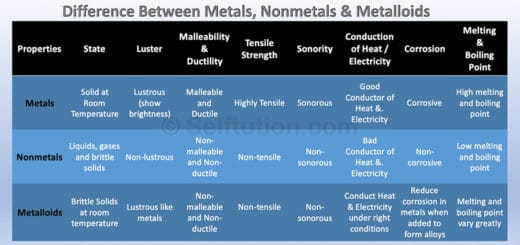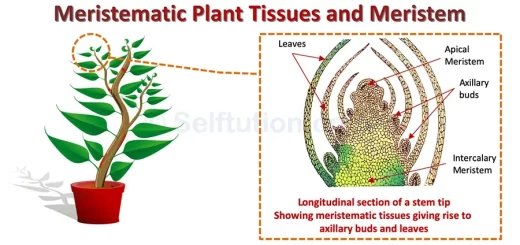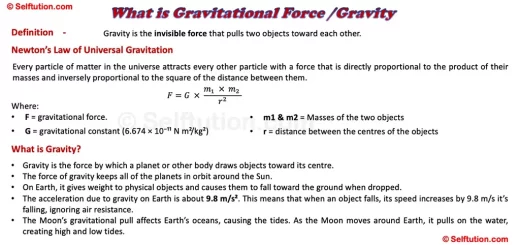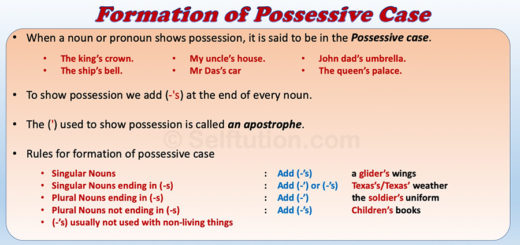Types of Environmental Pollution with Examples
There are five major types of environmental pollution. These are – air pollution, water pollution, soil pollution, noise pollution, and light pollution.
Introduction
The environment encompasses the natural surroundings in which we live, consisting of three primary components:
- air,
- water, and
- land.
To maintain our health and well-being, it is crucial to prioritize the conservation and protection of these elements. Unfortunately, currently, our environment is facing numerous threats that endanger its balance and integrity.
Human activities are the primary contributors to these environmental threats. In the pursuit of comfort and convenience, we have significantly harmed our surroundings through pollution and exploitation of natural resources.
Industrial processes, deforestation, and urban expansion have all contributed to the degradation of air quality, water sources, and land. For a sustainable future, we must adopt eco-friendly practices and reduce our environmental footprint.
Definition of Pollution
Pollution is the dirtying of the air, water, and soil by discharging harmful substances into it.
Today, our environment is getting polluted mainly due to urbanization, overpopulation, and industrialization. We face five main types of pollution – air pollution, water pollution, soil pollution, noise pollution, and light pollution.
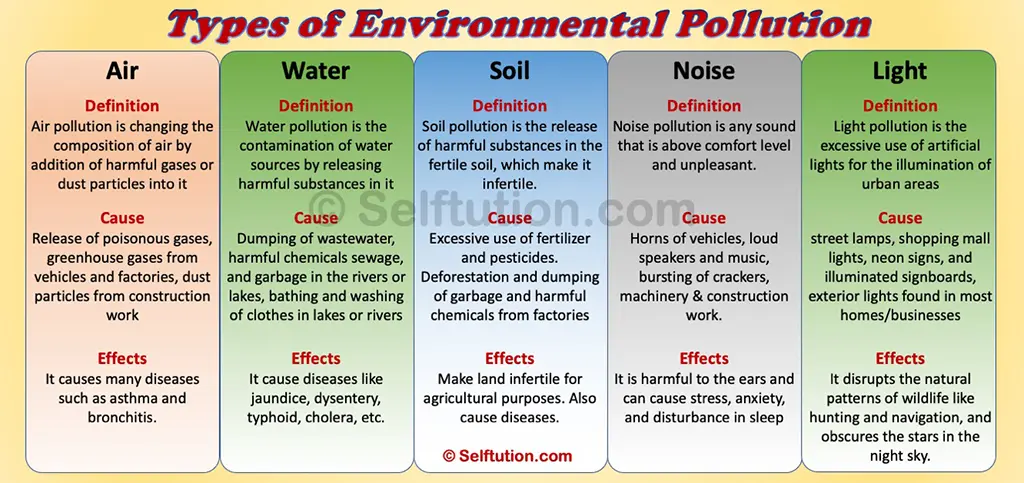
Five types of environmental pollution
TYPES OF AIR POLLUTION
The presence of harmful materials in the air is Air pollution. The air is a mixture of gases like oxygen, carbon dioxide, nitrogen, etc., which are present there in a fixed composition. For healthy living, it is very important to maintain a balance in the composition of these gases. However, this balance gets disturbed, when we add harmful substances or gases to the air. It causes many harmful diseases such as asthma and bronchitis.
Definition of Air Pollution
Air pollution is changing the composition of air by addition of harmful gases or dust particles into it.
Some examples of substances, which cause air pollution are-
- Fine particulate matter or dust particles,
- Poisonous gases like sulfur dioxide, carbon monoxide, nitrogen dioxide,
- Greenhouse gases such as carbon dioxide, carbon tetrachloride
Contributing Factors or Causes of Air Pollution
There are many factors or causes which can lead to air Pollution. They are both man-made and natural.
Man-made causes or factors of air pollution are:
- Smoke from vehicles consists of harmful gases like sulfur dioxide, nitrogen dioxide, carbon dioxide, carbon monoxide, etc.,
- Industrial release of fine carbon particles and poisonous gases like carbon monoxide, sulfur dioxide, ammonia, nitrogen dioxide, carbon dioxide, hydrogen sulfide, etc. Sometimes, the harmful smoke emitted from vehicles and factories combines with fog to form smog which is very harmful to health.
- Burning of fuels like coal, firecrackers, and even waste materials like dry leaves, etc., are some of the main causes of air Pollution.
- Cutting down trees to make buildings, houses, and industries result in less oxygen in the air. This makes it difficult for living beings to survive.
Natural causes or factors for air pollution are:
- Dust-storms in deserts,
- Smoke from a fire in the forest,
- Release of ash from volcanic eruptions
Air Quality Index: To measure the level of air pollution around us, we use the air quality index (AQI). The value of the air quality index (AQI) varies from 0 to 300. The lower the value of AQI the better the quality of air to breathe. Whereas, the higher value of the air quality index indicates a higher level of air pollution. To know the level of air pollution in your region click here.
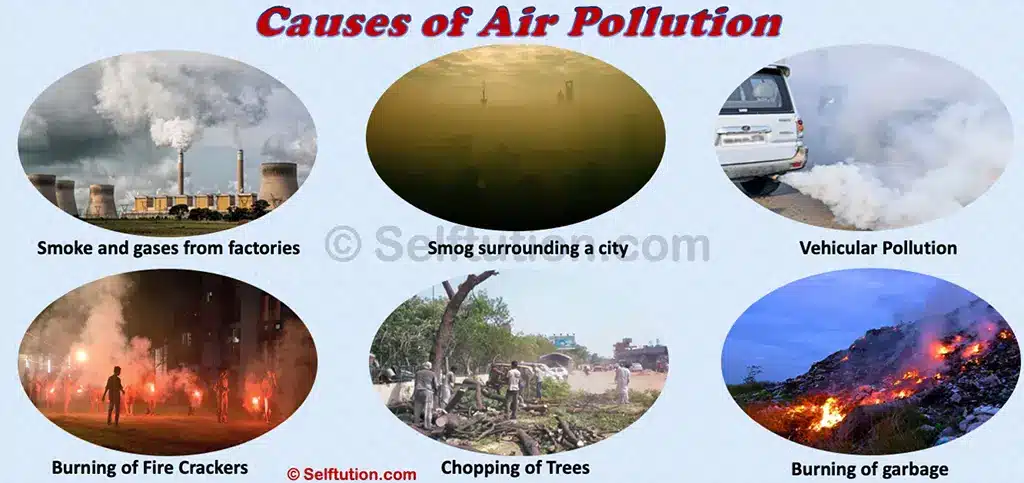
Factors and causes of air pollution
Back to the types of pollution
WATER POLLUTION
The contamination of water by releasing harmful substances in it leads to Water pollution. We obtain most of the potable water for drinking and other utilities from two sources – above ground and below ground. The sources of water, which are above ground are – rivers, lakes, oceans, etc. Whereas, we use open-hole wells, bore well, or tube wells to fetch water, which is below the ground.
Definition of Water Pollution
Water pollution is the contamination of water sources by releasing harmful substances in it.
Contributing Factors or Causes for Various Types of Water Pollution
The main factors or causes of water pollution are:
- Throwing garbage, dumping wastewater, and sewage water from urban areas in the rivers or lakes.
- Dumping wastes that include harmful chemicals and radioactive substances from the factories and industries in the nearby water bodies.
- Bathing and washing clothes in the lakes and rivers.
- Seepage of fertilizers and pesticides along with rain water or irrigation water.
Polluted water affects aquatic plants and aquatic animals. From drinking polluted water, people may suffer from diseases like jaundice, dysentery, typhoid, cholera, etc.
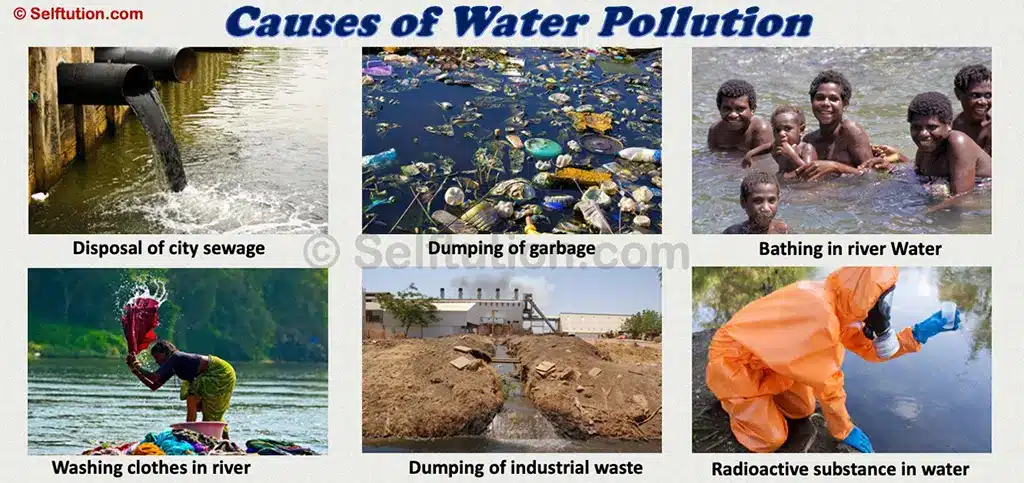
Factors and causes of water pollution
Back to the types of pollution
TYPES OF SOIL OR LAND POLLUTION
The release of harmful substances into the soil leads to land or soil pollution. The fertile soil is the primary requirement for agriculture to flourish. However, sometimes the release of unwanted substances into the land or soil, makes it infertile. Many harmful diseases are also caused due to soil pollution.
Definition of Soil or Land Pollution
Land or Soil pollution is the release of harmful substances in the fertile soil, which make it infertile.
Contributing Factors or Causes of Land or Soil Pollution
Major factors that cause land or soil pollution are:
- Throwing garbage and dumping wastewater and sewage water from urban areas into the open land.
- Dumping wastes that include harmful chemicals from the factories and industries in the nearby agricultural land.
- Excessive use of fertilizers and pesticides also makes soil infertile.
- Excessive deforestation leads to the erosion of fertile soil.
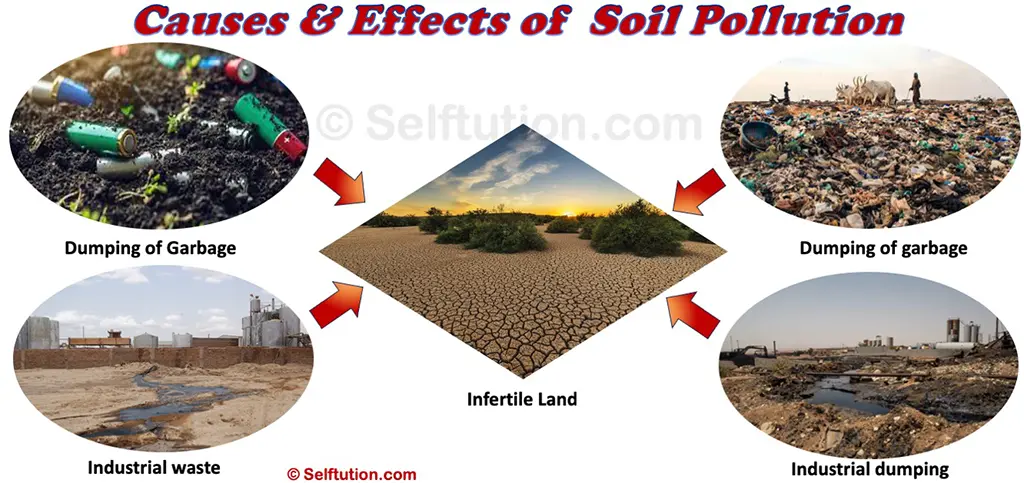
Cause and effect of Soil Pollution
Back to the types of pollution
TYPES OF NOISE POLLUTION
Noise pollution is any sound that is above comfort level and unpleasant. It is harmful to the ears and can cause stress, anxiety, and disturbance in sleep. Noise pollution is seen mainly in big cities. The unit for measuring the level of noise pollution is decibels (dB).
Definition of Noise Pollution
Noise pollution is any sound that is above comfort level and unpleasant.
or
Noise pollution is any sound that is above the permissible noise limit.
Contributing Factors or Causes of Various Types of Noise Pollution
Major factors that cause noise pollution are:
- Horns of the vehicles.
- Loud music and loudspeakers during festivals and marriages.
- The bursting of firecrackers.
- Machinery and construction work.
- Transportation systems such as trains and airplanes.
Permissible Noise Limit: In industrial areas, the permissible noise limit is 75 dB for daytime and 70 dB at night. In commercial areas, it is 65 dB and 55 dB, while in residential areas, it is 55 dB and 45 dB during daytime and night respectively.

Causes and effects of noise pollution
Back to the types of pollution
LIGHT POLLUTION
Light pollution is the excessive use of artificial lights for the illumination of urban areas. It disrupts the natural patterns of wildlife, disrupts human sleep, and obscures the stars in the night sky. Artificial light confuses nocturnal animals and those animals which hunt at night or use stars for navigation.
Definition of light pollution
Light pollution is the excessive use of artificial lights for the illumination of urban areas, which disrupts the natural patterns of wildlife, disrupts human sleep, and obscures the stars in the night sky.
Contributing Factors or Causes of Light Pollution
Major factors that cause light pollution are:
- street lamps,
- shopping mall lights,
- exterior lights found in most homes/businesses,
- neon signs, and
- illuminated signboards
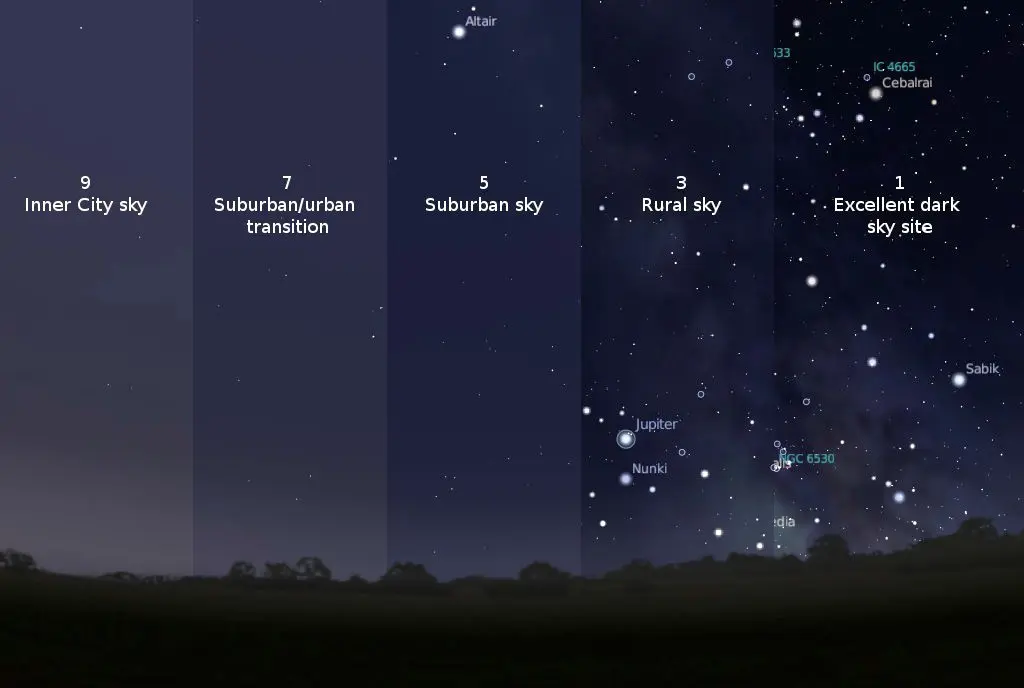
Light Pollution and its effect on the night sky
